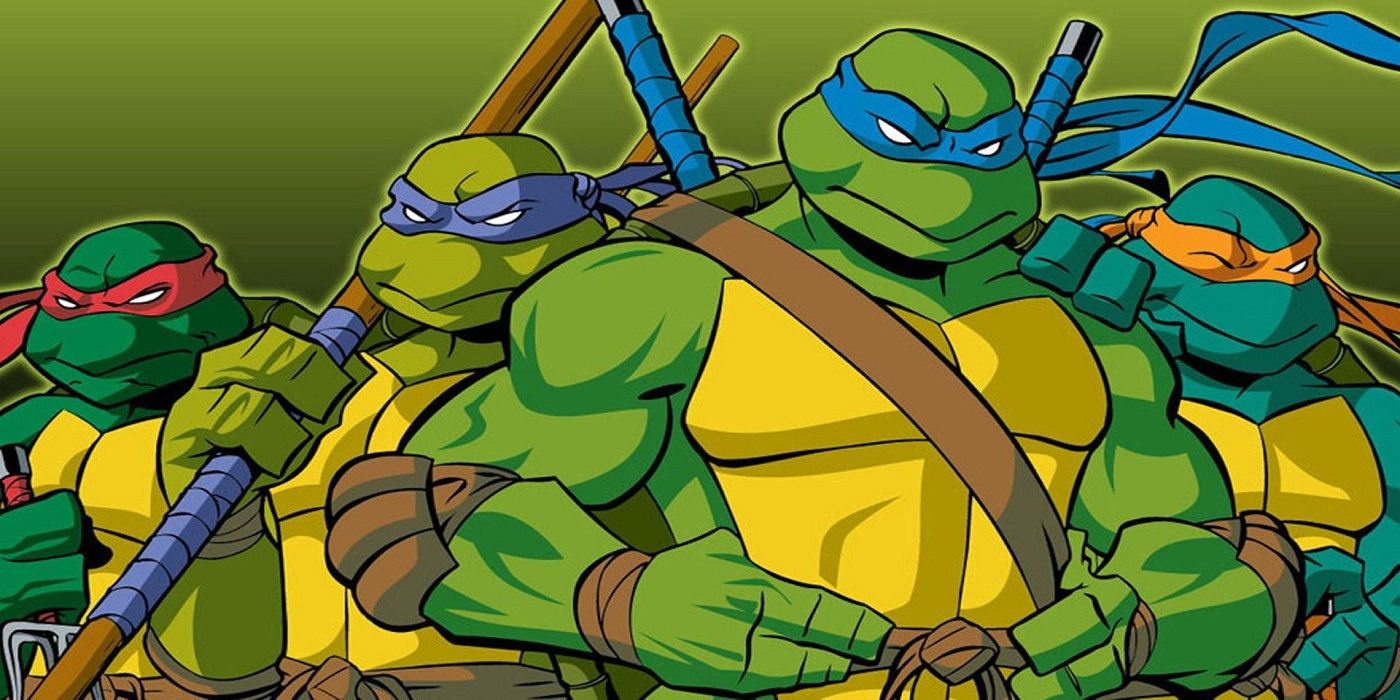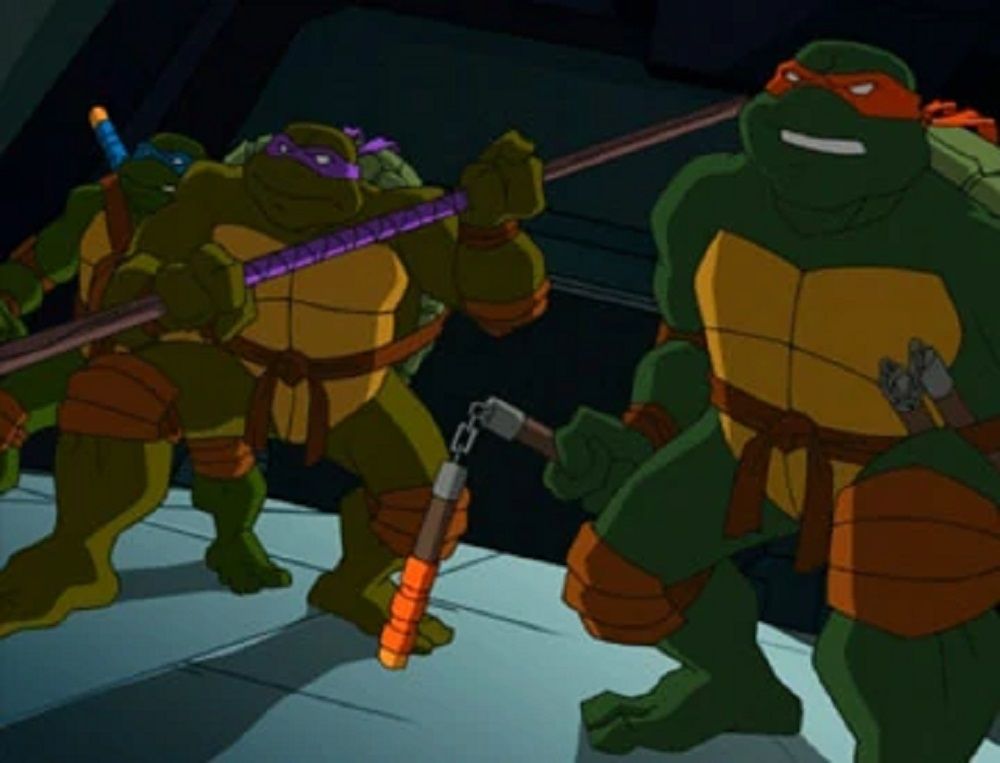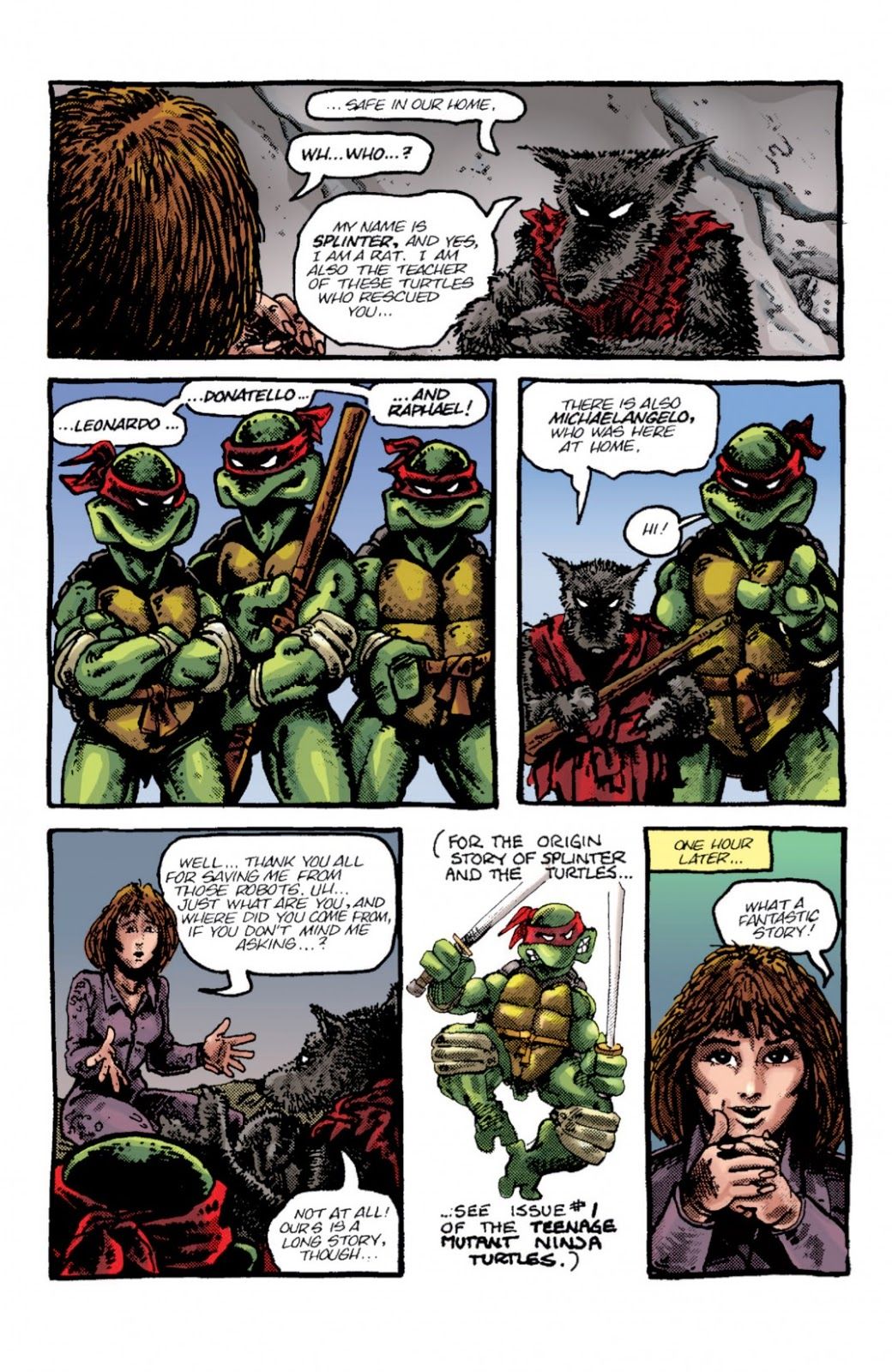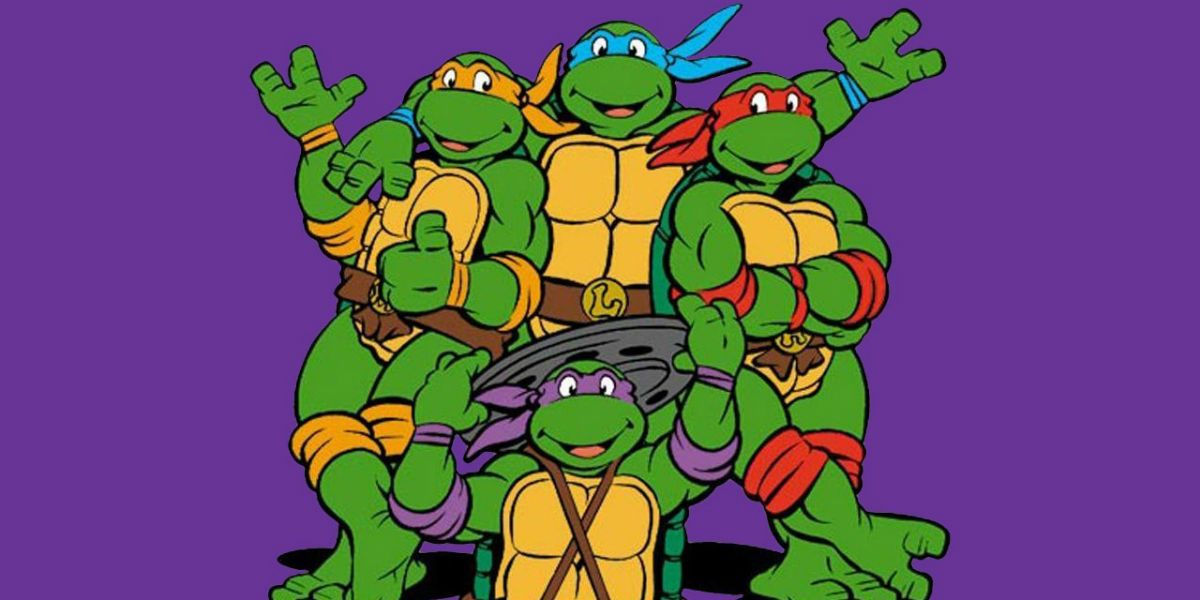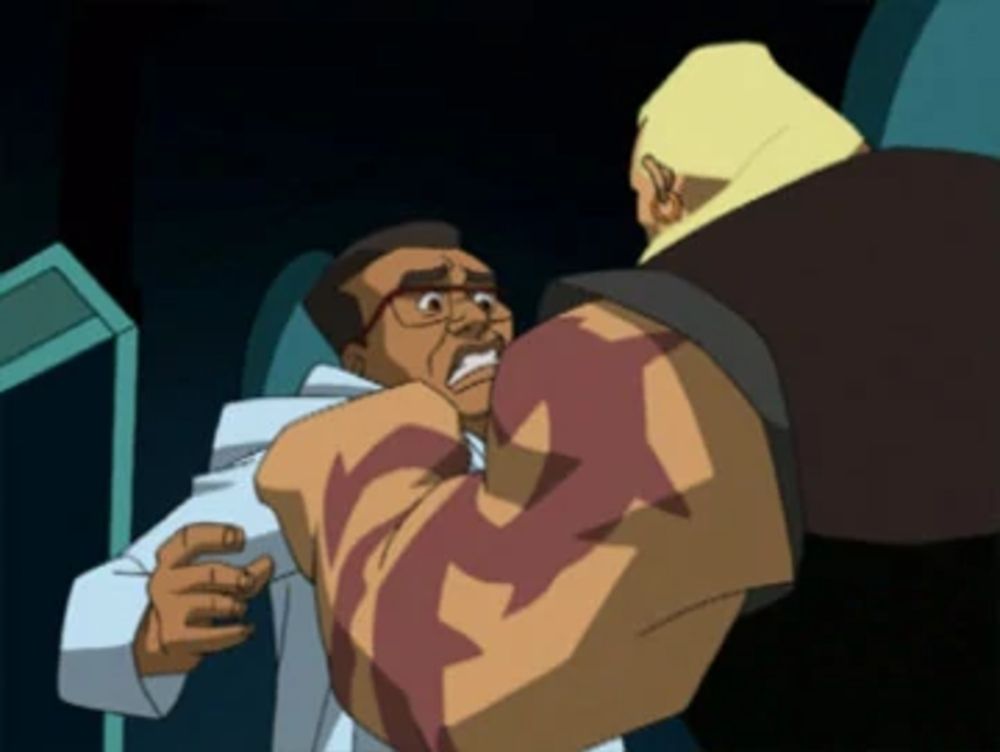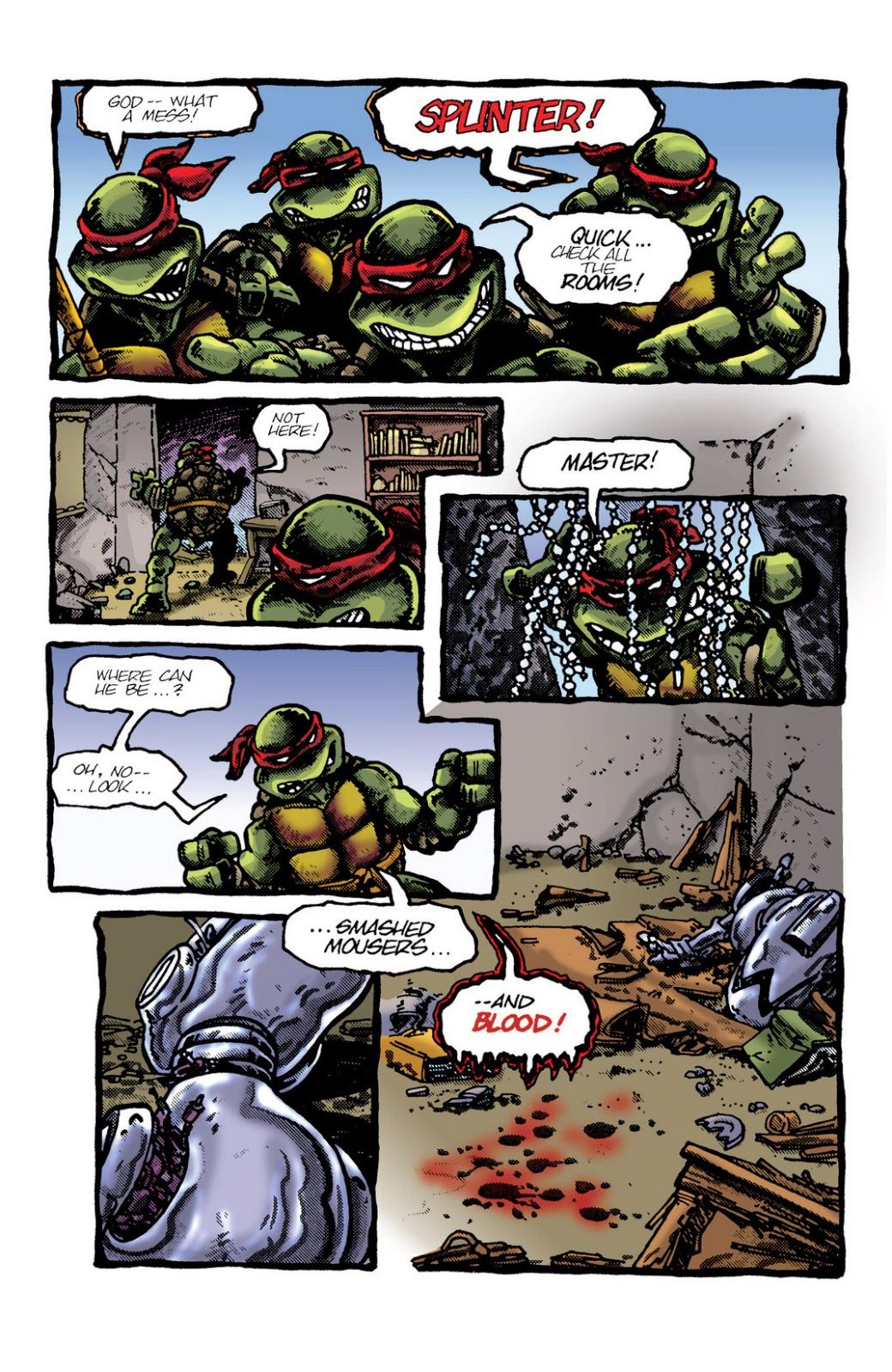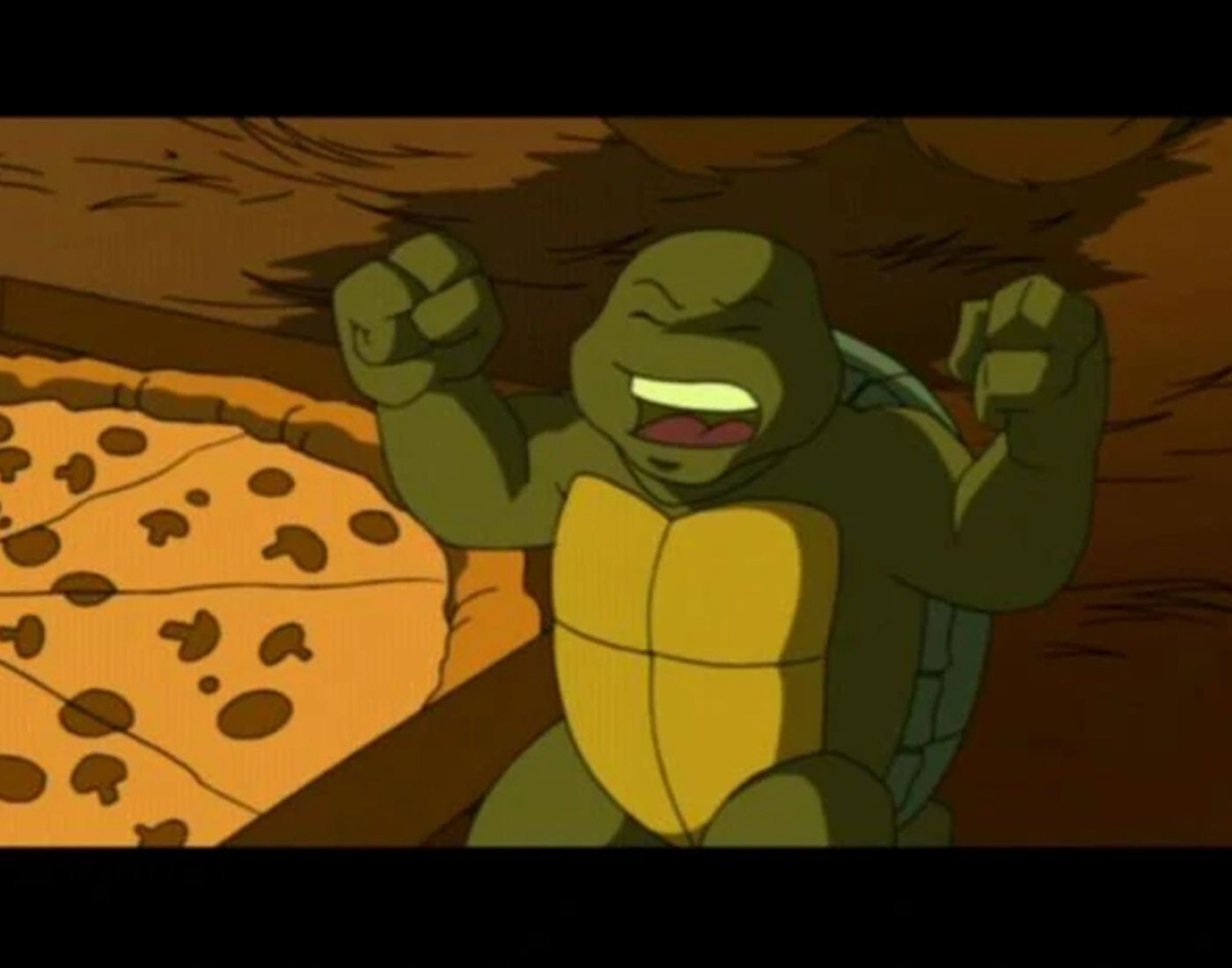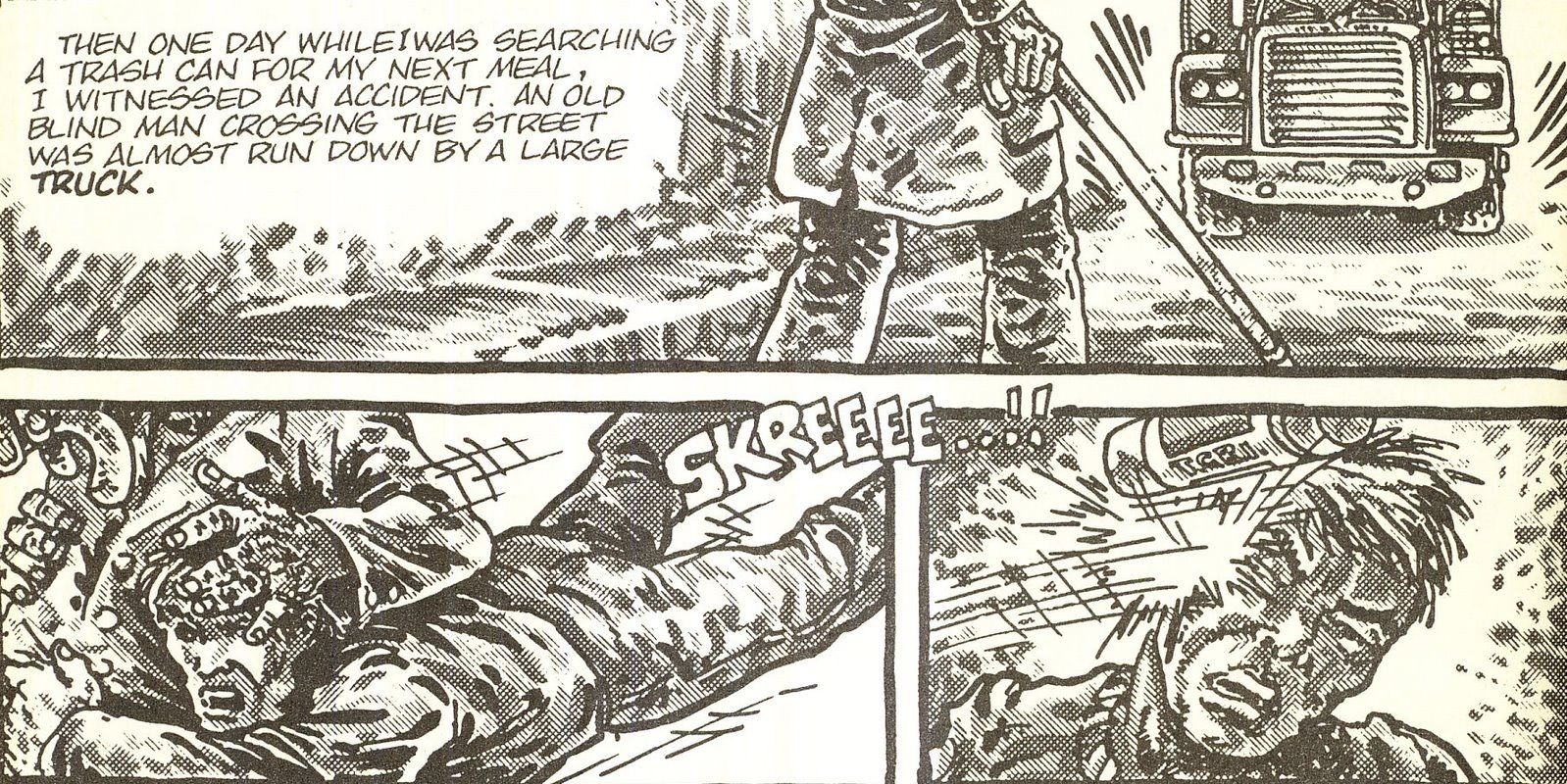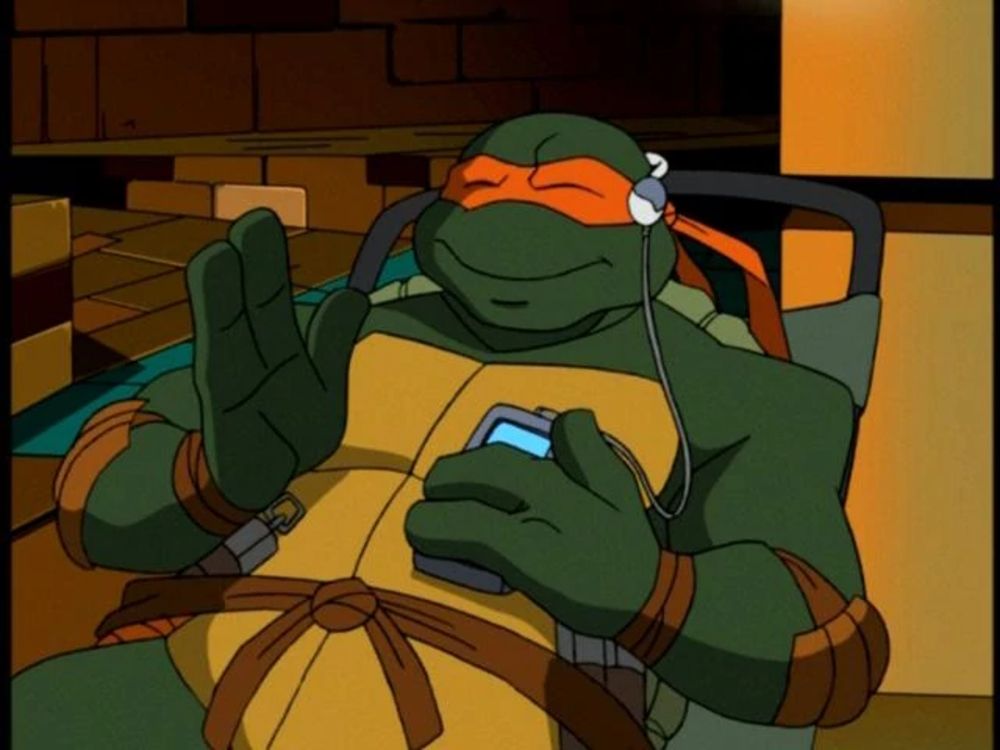Welcome to Adventure(s) Time's 119th installment, a look at animated heroes of the past. This week, we're returning to the 2003 Teenage Mutant Ninja Turtles series (or TMNT, as it's usually identified) and its unique take on the characters' origins. Also, if you have any suggestions for the future, let me hear them. Just contact me on Twitter.
Debuting on Feb. 22, 2003, “Attack of the Mousers” from writer Eric Luke continues the show's adaptation of the original Mouser storyline from Kevin Eastman and Peter Laird's independent Teenage Mutant Ninja Turtles comics. The basic beats remain the same: Young lab assistant April O'Neil realizes her boss Baxter Stockman is insane, he senses that she's betrayed him, miniature rodent-consuming robots are unleashed, and the Turtles rescue April not far from their underground home.
You might be under the impression the crew merely flipped through back issues of the comic and quickly assembled the script, but it was actually a far more complicated process. Storytelling necessities differ between comics and animation, network censors had to be appeased, adjustments had to be made for the show's target audience -- not the teenagers buying those black and white Mirage comics in the '80s -- and there was this matter of the toyline, which justified the money spent on the series in the first place.
If you're curious about the development of the episodes, Turtles co-creator Peter Laird has documented his notes on the various stages of the scripts on his blog. Some of his notes might seem arbitrary, but others -- like when he advises the producers to have April physically pursue the Mousers instead of following them in a car -- show just how insightful he is in the arena of visual storytelling.
Continuing its adaptation of the second issue of the original comic, the story opens with April returning to consciousness and realizing that she's been rescued by four humanoid turtles and their aging rat mentor. This sequence is one of the classics of Turtles lore, and it was adapted in both the 1980s cartoon and also the first movie. Here, April is far more incredulous about the existence of the Turtles in a break from the story it's adapted, where she accepted the Turtles within a page or so. Amusingly, when April asks the Turtles about their past in the comic, the story cuts away for a panel to plug the book's opening issue.
Since the cartoon has yet to establish the Turtles' origin, though, we're given the basics of the story -- overlooking the details of Splinter's past -- as it ties in with the show's ongoing arc involving Shredder. What's notable about the scene is just how loyal it remains to original comics.
Splinter explains he was once an ordinary rat, who witnessed a teenager rescue a blind man from a runaway truck filled with radioactive fluid. A canister of the fluid fell out just as a startled child dropped four baby turtles into the sewer. Splinter rescued the baby turtles, collecting them in a coffee can. The next morning, all five animals awoke with advanced mental and physical faculties. The Turtles soon learned to speak, leading Splinter to raise them as his children, and for reasons left intentionally vague, teach them martial arts.
The 1990 live-action film came close to adapting this perfectly, while the 1987 cartoon took numerous liberties. By creating the most faithful adaptation of the Turtles' origin yet, the series created a genuine tribute to its roots. This flashback even has all four Turtles wearing red masks, just as they did in the Mirage comics. There's also a nod towards the 1980s cartoon, as the baby Turtles grow strong by eating pizza and toss around surfer slang like "Dude" and "Cowabunga!"
It's actually sly commentary, indicating that these Turtles only spoke like the 1980s cartoon when they were literally babies, effectively equating the friendly, happy Turtles of the '80s to "baby stuff." Michelangelo maintains the surfer speak and is thoroughly mocked for every "Awesomely radical, dude!" he blurts out, though. However, it could be interpreted that he's speaking like this specifically to irritate Raphael. The idea of Mikey as a refugee from the '80s show originated here, and it's pretty consistently been his portrayal since.
Following the flashback, the Turtles escort April to Stocktronics, where they stop the Mousers from menacing New York. Stockman escapes his exploding lab but is nabbed by the Shredder's main enforcer, Hun. Shredder, who's still not in his armor, demands Stockman pay for his failure, ordering Hun drag him off for some offscreen punishment.
A tech goon investigates the remains of a Mouser and uncovers a blurred image of the Turtles. The audience isn't sure if Shredder recognizes the brothers, but his dramatic slashing of the image indicates that they generate some reaction out of him.
Interestingly, the episode doesn't end with the shocking conclusion of the comics' storyline. The Mirage Teenage Mutant Ninja Turtles #3 opens with the Turtles returning home to discover a cadre of Mousers has assaulted Splinter in their absence.
It's a memorable scene, and also the basis of the 1988 Teenage Mutant Ninja Turtles NES game. And, really, it's the logical conclusion of the story that introduces the Mousers. Why introduce robotic rat hunters and not have them menace the series' giant rat?
DESIGN-Y
The flashback's baby Turtles are similar to the designs of the first issue of the comic book. There's also an interesting sepia tone to the flashback sequence, and an added letterbox effect. Since the episode is viewed today with the aspect ratio of a widescreen TV, the framing now resembles that of a box. Unintentional, but a cool look.
CONTINUITY NOTES
The two uniform cops that resemble creators Kevin Eastman and Peter Laird return, attempting to stop one of the Mouser's robberies.
While the Turtles' origin famously cribs from Daredevil's origin, the show escapes any legal issues the unauthorized appearance of a teenage Matt Murdock might've caused, if it had aired without any changes. The show sidesteps this by making the teenager a young black man, in place of a Miller-esque ginger.
HEY, I KNOW THAT VOICE
Scott Williams (not the comic book inker) voices Baxter Stockman. He's also known as the voice of Pokémon's Darkrai, Throh, Tornadus and various other characters in Canadian voice productions.
I LOVE THE EARLY AUGHTS
Michelangelo, bored with April's continuous fainting, wanders off with his portable music player. Peter Laird requested in his notes that the device be an iPod.
"IT HAS...THREE...FINGERS!"
The development of the series' early episodes is interesting, if only when viewed in the context of the times. There wasn't a lot of evidence the public wanted a more comics-accurate Turtles, given that the mainstream version of the team featured such a radically different tone. Also, so much of the early appeal of Mirage's Turtles resided in the creators playing off comics industry fads of the day, a context that would've been utterly foreign to a kid in the early 2000s looking to graduate from Digimon. Not to mention, the more friendly, mass-merchandised Turtles had flamed out spectacularly by the mid-1990s.
This leaves the creators in a position of creating a series that's more serious, but not too serious, and distinct from the now uncool '80s Turtles, but not too distinct, since that version was the accepted interpretation of the characters to the average person. Turning to the earliest comics might not have been the most obvious way to go, but it was ultimately the right choice.
As much as those early issues are remembered for the collector frenzy surrounding them, it's important to remember just how solid these stories actually are. Eastman and Laird realized quickly that the absurdity of the premise opened their world to an endless variety of stories. Once the audience has suspended disbelief enough to accept anthropomorphic turtles and their rodent sensei, alien worlds and dimension-hopping aren't a stretch. While those early comics had a fly-by-their-seat feel to them, the cartoon has the advantage of building the world and carefully laying the groundwork for the more outlandish concepts.
Acquiescing to what did work from the mass-merchandise days -- like the popularity of Shredder as an ongoing antagonist -- is another smart play. And while the humor could easily feel irritating -- or just out of place, considering the tone of the stories being adapted -- many of the gags are genuinely clever. There's every reason why this series shouldn't work, but the first season is genuinely impressive.

